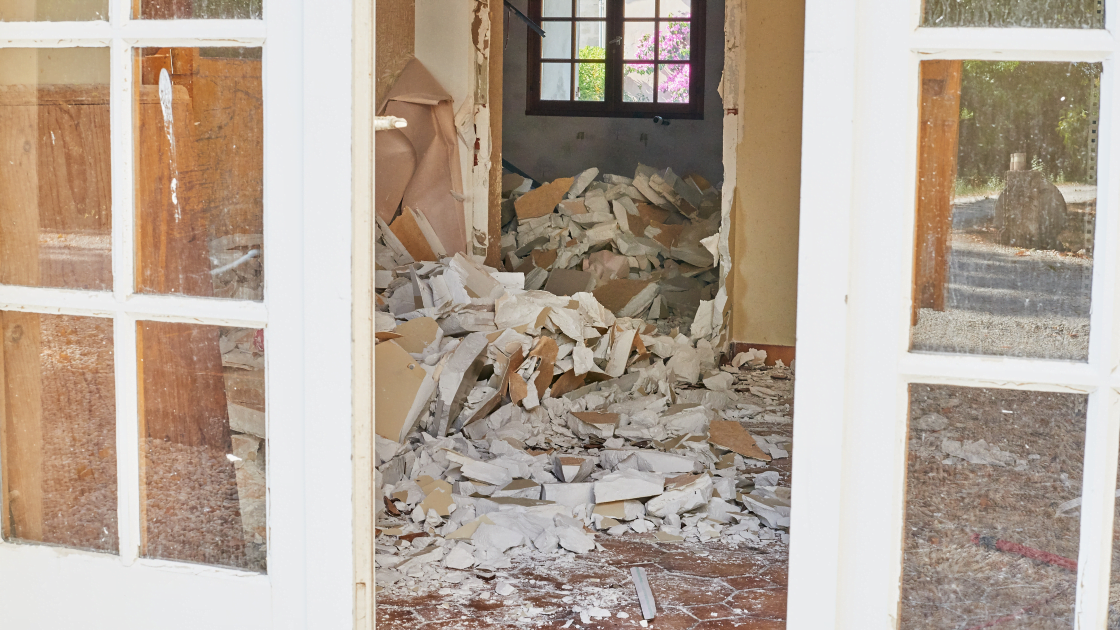
What’s all this fuss about construction dust? As the Health and Safety Executive has been campaigning these last few months, Dust Kills.
The RJS Waste Management team works with many construction workers, so it’s worth highlighting this. While promoting the need for better dust awareness, and asbestos awareness, within the industry.
HSE’s Dust Kills campaign
In May this year, The Health and Safety Executive (HSE) launched a Dust Kills Campaign. They’ve teamed up with Working Well Together, Health in Construction Leadership Group, CECA, Construction Leadership Council, and Construction Dust Partnership to give free advice on the control measures needed to prevent exposure to dust at work. And they’ve focussed on a couple of key industries.
Over the past two years, HSE made over 1,000 woodworking inspections. They found 78% of businesses didn’t adequately protect workers from respiratory sensitisers (hardwood, softwood and composite material dust).
As Work Right says: “Dust particles can be 100 times smaller than a grain of sand. You don’t need to see them to breathe them in. Once in your lungs, dust will start causing damage.
Exposure to dust can lead to severe breathing difficulties and lung diseases that can ruin lives and cause early death.
It can take years before the damage is visible and by then it can be too late. Make sure you are aware of the risks and work in ways that always protect your lung health”.
The HSE also found there are thousands of irreversible lung diseases due to exposure to construction dust. These preventable diseases are leaving workers with long-term health conditions, if not early death.
These worrying stats prompted them to roll out inspections target woodworking and construction businesses. The inspections –– running through May, June and July –– focus on respiratory risks from exposure to dust.
Michael Thomas, HSE’s chief inspector of construction, comments:
“Every year we see construction workers die from diseases caused or made worse by their work. This is unacceptable in the 21st century when occupational lung disease is preventable…
Our inspectors will visit a range of construction sites to check businesses are taking the necessary action to ensure their workers’ long-term respiratory health is being protected.
Through engaging with those on-site, we can make sure they have considered the job from start to finish, have considered the risks at each stage, and are managing the risks with effective measures in line with the broad hierarchy of control options such as water suppression, extraction, and as a last resort Respiratory Protective Equipment (RPE)”.

Construction dust considerations
There are certain construction jobs that put you at more risk of breathing in dust regularly, these include:
- Dry sweeping inside (at site clearances, for example)
- Using a cut-off saw on concrete
- Grinding concrete
- Cutting and sanding wood
- Abrasive pressure blasting
- Soft stripping
The three main types of construction dust workers and business owners need to be cautious of are:
- Silica dust
- Wood dust
- General dust –– from gypsum, limestone, marble and dolomite
Breathing in these dusts can damage the lungs and airways and cause dust-related diseases like:
- Lung cancer
- Silicosis
- Chronic Obstructive Pulmonary Disease (COPD)
- Asthma
Like asbestos-related diseases (caused by inhaling asbestos dust fibres), these can take a while to develop and be life-changing.
We’re familiar with the magnitude of asbestos risks. This is why we provide asbestos awareness training for our construction industry colleagues. What’s more, we keep our customers safe with professional asbestos survey and removal services.
But did you know around 500 construction workers die from exposure to silica dust each year?…
3 health and safety tips for construction workers
HSE’s guidance to stop construction dust comes in three simple steps:
- Plan your work –– Do you need to cut? Can you need to use power tools?
- Stop dust getting into the air – Can you damp down dust or wet cut? Can you use on-tool extraction?
- Use the right mask –– Are you clean-shaven? Does the mask protect and fit you?
RJS Waste Management plans and protects
Committed to keeping our staff as safe as our customers, RJS Waste Management takes the control of construction dust and encapsulation of asbestos fibres seriously. So contact us for your worry-free site clearance project, soft strip works or asbestos removal job today.




